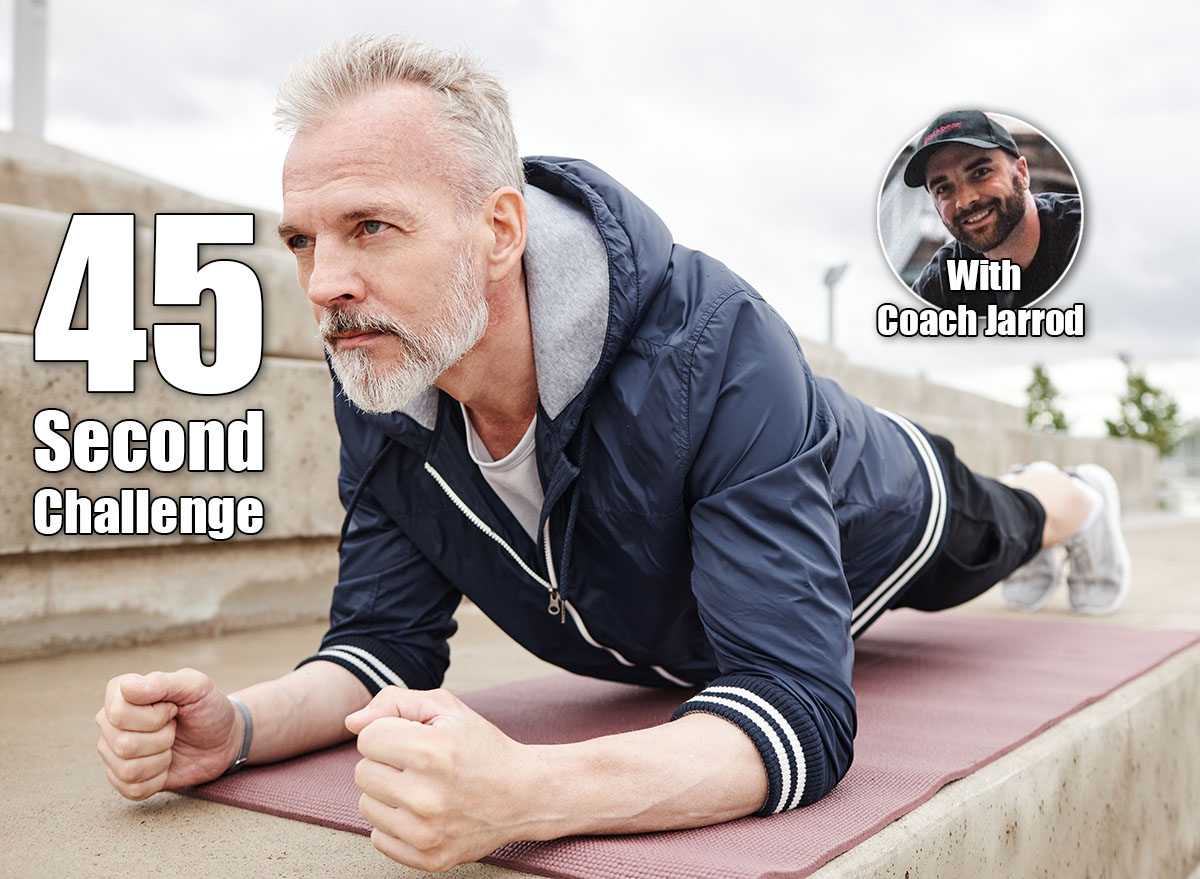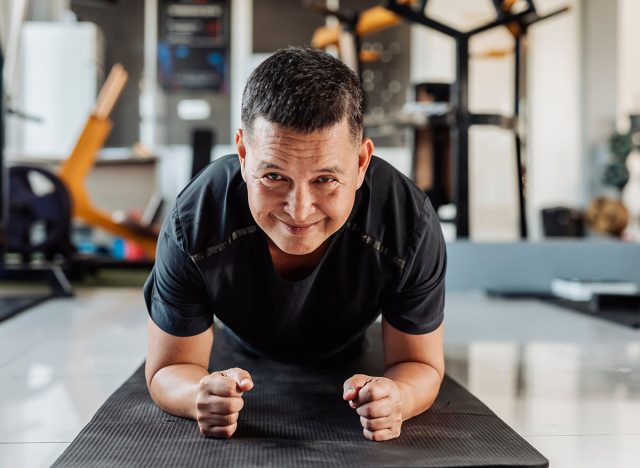If You Can Hold This Position for 45 Seconds, Your Strength Is Elite After 50

Getting older doesn’t mean losing your edge. Some of the simplest strength tests can reveal just how capable your body still is. One of the best? A 45-second plank. Holding a solid plank challenges your core, shoulders, and even your mind. If you can maintain this position for nearly a minute, your strength and stability are better than most people your age.
Why does this matter? Core strength goes far beyond looking good. It supports your spine, improves your posture, protects your back from injury, and gives you the stability you need for everyday tasks. From picking up groceries to climbing stairs, your core is the foundation of almost every movement you make. A plank tests that foundation in one of the most effective ways possible.
Not only is the plank a measure of physical strength, but it also checks your endurance and body control. Holding yourself steady against gravity for 45 seconds without sagging or shaking proves you have the muscular resilience needed for real-life challenges.
In this article, you’ll learn how to test yourself with the plank, what your score means, and the best strategies to improve if you aren’t quite there yet.
The 45-Second Plank Test

The plank isn’t just a core exercise; it’s a full-body strength and endurance challenge. It targets your abdominals, glutes, shoulders, and even your legs. Holding this position shows you have the stability and muscular control to support your spine and perform daily movements with ease.
How to Do It:
- Set up your base: Start on the floor, resting on your forearms with your elbows directly under your shoulders and palms flat or hands clasped.
- Position your legs: Extend your legs straight behind you, pressing your toes into the ground. Keep your feet about hip-width apart for better balance.
- Align your body: Form a straight line from your head to your heels. Avoid dropping your hips or pushing them too high.
- Engage your muscles: Tighten your core as if bracing for a punch, squeeze your glutes, and lightly contract your quads to stay stable.
- Set your focal point: Keep your neck neutral by looking at the floor just in front of your hands, not craning your head up or letting it drop.
- Hold steady: Breathe slowly and maintain this position for as long as possible without compromising your form.
Form Tip: Think about pulling your belly button toward your spine and keeping your neck in line with your body. Don’t let your head drop.
How You Measure Up:
- Elite: 45 seconds or more
- Strong: 30 to 44 seconds
- Needs Work: Less than 30 seconds
How to Improve Your Plank Time
Building a 45-second plank requires more than grit. You need stronger core muscles, more stable shoulders and glutes, and consistent practice. These strategies help you hold the position longer with better form.
- Build core strength: Strengthen your deep stabilizing muscles with exercises like dead bugs, bird dogs, and side planks. Perform these two to three times per week, focusing on slow and controlled movement.
- Strengthen your glutes and shoulders: Add glute bridges, hip thrusts, and band pull-aparts to your routine. These muscles keep your hips from sagging and your shoulders from collapsing during a plank.
- Practice the plank often: Start with shorter holds, like two to three sets of 15–20 seconds, then add 5–10 seconds each week. Consistent practice helps your body adapt and improves your endurance.
- Prioritize form over time: A shaky or sagging plank doesn’t count. Keep your body in a straight line from head to heels, engage your core, and reset if your form breaks.
- Progress with purpose: Once you can hold 45 seconds comfortably, add difficulty with side planks, plank shoulder taps, or weighted planks to keep improving.